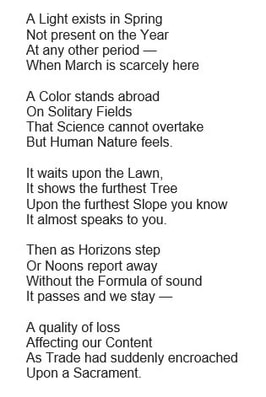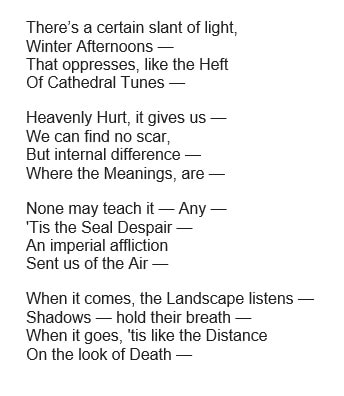Today’s theme is “light” – and I’ve selected “A light exists in spring” and “There’s a certain slant of light.” Of course, the first poem describes the sun’s light of springtime, “When March is scarcely here,” and the other speaks of the light in winter.
In spring, the light “waits upon the Lawn / It shows the furthest Tree / Upon the furthest Slope you know” so that “It almost speaks to you.”
In winter, it “oppresses, like the Heft / Of Cathedral Tunes” and brings about “internal difference,” an “imperial affliction / Sent us of the air.”
In both poems, the passage of time and the movement of the light brings on despair. In spring, as “It passes and we stay,” there is “A quality of loss / Affecting our Content.” The mood is even more ominous with the passage of light in the winter: “When it goes, 'tis like the Distance / On the look of Death.”
LOL -- this made me wonder when Seasonal Affective Disorder was first diagnosed -- and I found this:
"The variation of mood with the seasons has been acknowledged for a long time. It was in 1984 that the term Seasonal Affective Disorder (SAD) was first used in a paper by Norman Rosenthal and colleagues at the National Institute of Mental Health in Bethesda, MD."
Hmm...I wonder if Science should give a little bit of credit to Emily Dickinson!
BTW: I mentioned the oxymoron, “Heavenly hurt,” in line 5 two days ago when I discussed “The saddest noise, the sweetest noise,” a poem about how the songs of birds in the spring “make us think of all the dead” – and the memories are “Made cruelly more dear.”


 RSS Feed
RSS Feed
